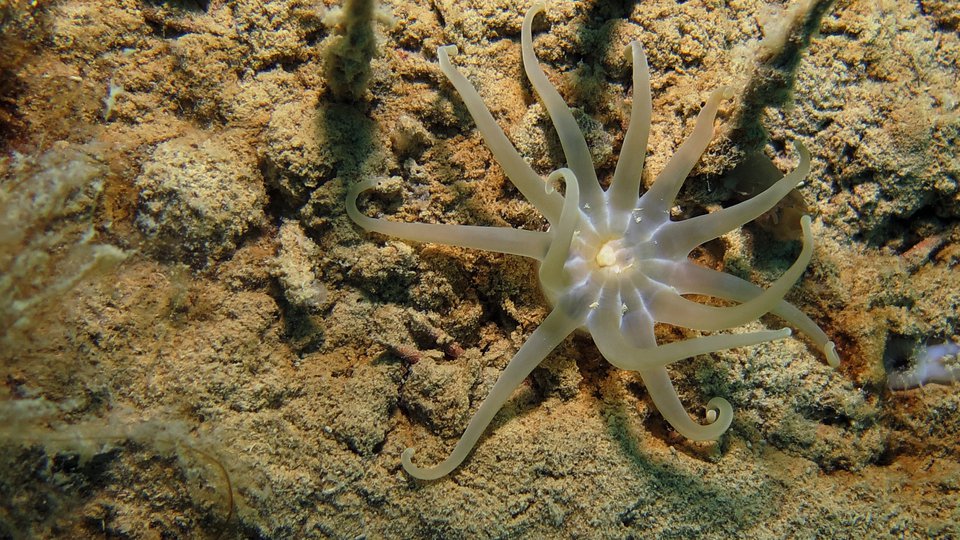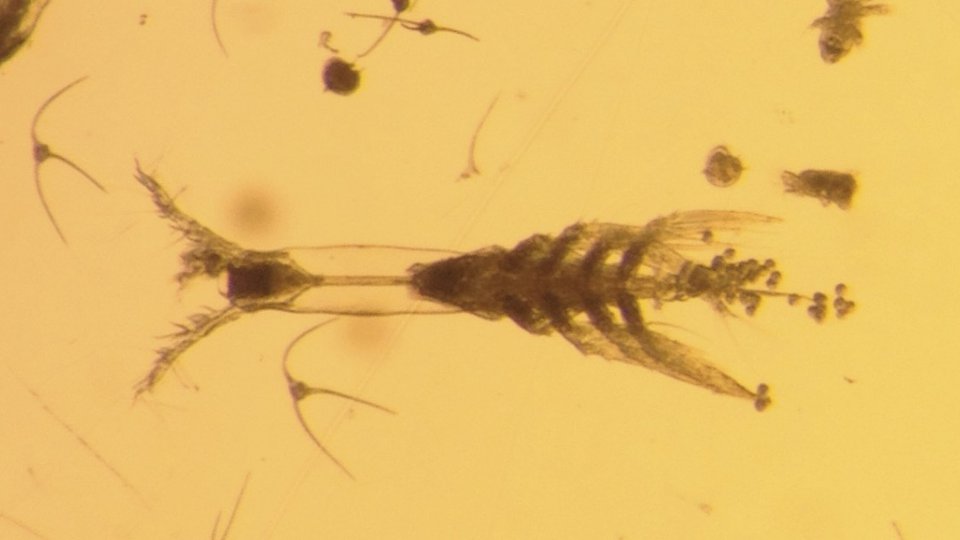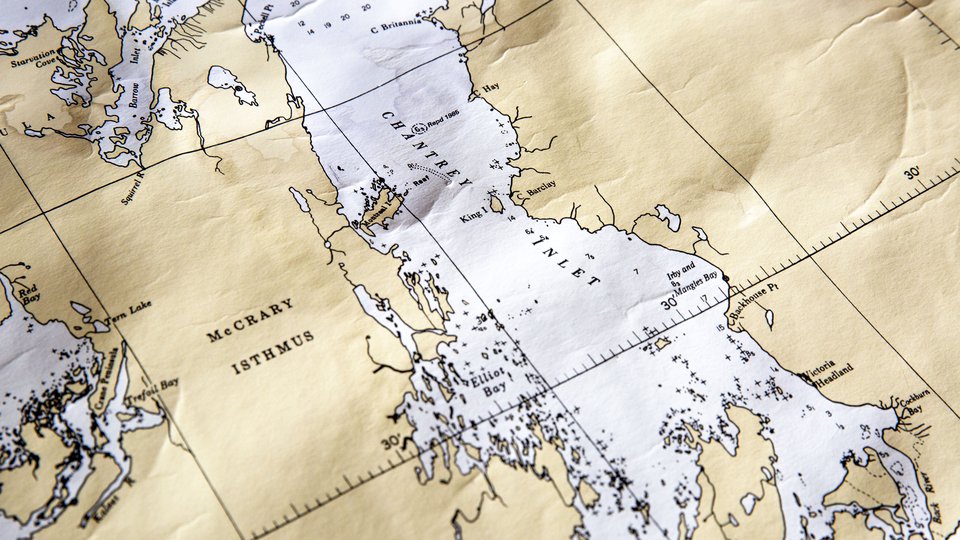
Onboard we have short, sporadic hours of sleep, our bunks leak and we sleep in a lee cloth to keep from rolling out onto the floor. We spend many hours working aloft in the rigging, rain or shine at the mercy of the weather. I've spent countless hours at the helm keeping the ship on its course and scanning the horizon for any oncoming danger. I know to some this might sound horrible and to others it might sound like a dream, but after I tell you a few stories I expect you will understand why I am absolutely in love with this lifestyle.
Our first leisurely stop was on the Grand Banks of Newfoundland. We hove to, turned the ship into the wind and cast a few fishing lines into the water. For about an hour we jigged our lines up and down but much to our disappointment the marine life was just not as booming as it used to be, or perhaps we were doing something incredibly wrong. In fact, all we caught was each other's lines in one big, snarly mess. It’s a good thing we weren’t in the 1800's as our vessel might suggest, because we surely would have starved to death that night.

(Photo submitted by Olivia Ferguson)
The further north we sailed the colder the temperature dropped but I do recall a particularly warm day off the coast of Newfoundland. One of the crew had spotted the spray from a whale in the distance. As the whale approached the ship, we realized it was not just a single whale but a whole pod of orcas. Roughly twelve of them and they were coming directly toward our ship. With a loud call out from our watch the whole crew was on deck instantaneously, all 15 of us. We were full of utter amazement as the pod swam directly under the ship showing off their beauty.
I've spent over a year at sea in several different countries, but this particular moment will forever be one of my fondest memories. I don’t think one can truly appreciate the beauty of raw nature and the ocean until you are immersed in a moment such as this. It also amazes me what a marine mammal's appearance can do for the crew's morale. Much like the warm sun, everyone’s face was glowing with pure happiness that day. A genuine heartwarming moment that connected us to the sea. (Video provided by Shaun Coveney)
In addition to several whale sightings, we also saw a steady stream of seabirds, consistently changing as we passed into new latitudes. My favourite being the Northern Fulmar.
This pelagic, white and grey bird resembles a seagull and is native to the far North Atlantic and North Pacific oceans. The fulmar is an incredible bird that can survive for days without food by sustaining itself on the oil in its stomach. Incredibly this also serves as a defence mechanism. The Northern Fulmar is able to regurgitate the stomach oil to attack predators and disable their maneuverability. In my eyes this is a stunning evolution of prey.
There are two prominent weather patterns in the North Atlantic Ocean. The Icelandic low is an area of low atmospheric pressure which often causes strong wind patterns. In theory, the Icelandic low-pressure system should have been in our favour to blow us north. However, one lesson I learned quite a while ago is when it comes to weather you can’t plan it, and you certainly can’t control it.

(Photo submitted by Olivia Ferguson)
I will never forget the first storm. The seas were fiercely washing over the middle of the deck at midships. The swell was easily several meters high and the storm caught up with us during my watch in the dead of night. The wind whistled through the rigging and was a force to be reckoned with. Steering the ship was now a dedicated job that only the mates or the captain himself could do. They knew all too well how the ship handled in big seas, a daunting task that requires mass amounts of precision and focus.
None of us protested, instead we lay aloft, climbing up the mast to strike and pack away a few sails. We needed to lose some power in the sails, and we needed to do it fast. As we hadn’t been sailing on ACTIV for all that long at this point, no one was completely comfortable with the rigging of this ship. However, I had been sailing on tall ships for a few years now and was quite comfortable aloft in stormy weather, so I volunteered to join in on this daunting task.
In my eyes there is nothing more frightening yet exciting than to climb aloft in this sort of rough weather, hanging on for dear life while being thrown around 30 meters above sea level. Each step is first very carefully thought out. Moving while the vessel is riding up the waves and holding on tight to the rigging as she is surfing them down. The rain is pouring down with a mighty fist that can only be seen in the dark of night shredding through the deck lights.

(Photo submitted by Olivia Ferguson)
On our approach to Svalbard the sun was now shining 24 hours of the day. It was a unique experience to slowly sail into endless hours of sunlight and made for a confused internal clock.
With the wind chill picking up it was so cold and crisp that I was dressed in 4 layers of thermal and wool clothing under my full foul weather gear. My feet were constantly cold despite thick layers of wool socks and the occasional heating pack. It’s hard to keep clothes dry at sea. Putting on cold, slightly damp clothes before a watch is something I never looked forward to.
I was at the helm when we spotted land. After a month at sea we were finally able to see the lush peaks of the fjords. Though we could see land, we were still many miles and hours away.
As we approached our long awaited destination, the calm weather took a turn. From calm to crazy the wind picked up quickly. The waves became jarring and fierce. A particularly harsh wave threw my fellow crew member Sylvia from her bunk and also snapped the bolts which fastened our wood-stove down to the floor in the galley where we ate. It’s 4 am. Weary eyed, drained and tired we now struggled to put the ship back together. Our final destination was now in sight, yet still felt so far away…
The story continues...stay tuned for part III.





